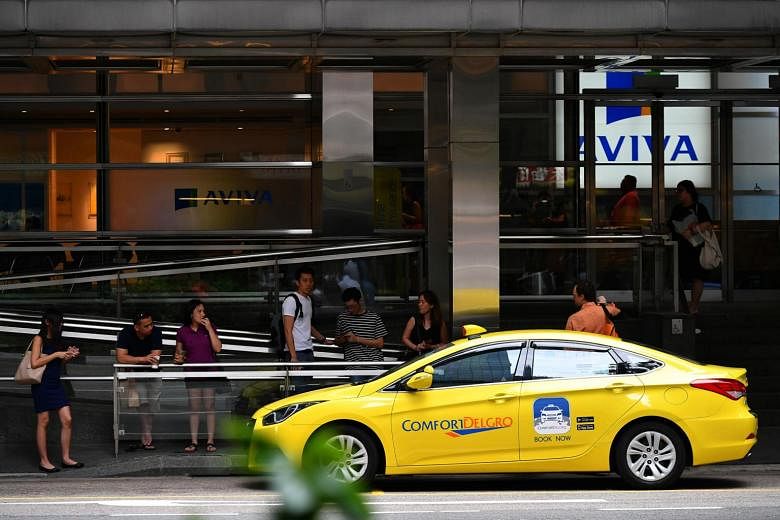SINGAPORE - The taxi population has fallen by more than 10 per cent since the arrival of ride-hailing apps such as Uber and Grab.
According to latest Land Transport Authority (LTA) figures, the number of cabs here hit an eight-year low of 25,699 as at June 30. This represents a 10.6 per cent drop from its peak of 28,736 in 2014 - a year after Uber and Grab set up here.
In fact, the cab population has been shrinking every year since then, with little or no prospect for an upturn in the foreseeable future.
The bleak outlook had prompted SMRT Corp, the third largest operator here, to enter into talks with Grab to dispose of its taxi business.
Cabbies themselves are leaving the trade in droves. According to an earlier report by The Straits Times, the percentage of idle or unhired taxis hit 9.1 per cent in May - almost double what it was same time last year.
Before Uber and Grab entered the fray, the unhired rate for taxis rarely went above 3 per cent.
Ex-cabby Alan Tang, 54, was among those who called it quits this year. Now in the security industry, Mr Tang drove a Comfort taxi for about three years before giving up.
"When I started in 2014, I was earning around $3,500 a month for a 12-hour shift. Just before I left, it had fallen to below $3,000," he said.
"Driving a taxi has its fringe benefits - such as freedom and access to a car for personal use - but it becomes not worth it when your earnings fall below $3,000," he said.
In his new job, Mr Tang said he is "easily making more than $3,000".
"My pay last month was $3,800," he noted, adding that he has days off, annual leave, dental and medical benefits, and most importantly, CPF.
"In the three years that I was driving a cab, I estimate that I lost close to $40,000 in CPF contributions," he said.
Like his former compatriots, Mr Tang blames the rise of private-hire players - and the inability of the taxi industry to respond adequately - as the only reason for the falling popularity of taxis.
Since 2013, the number of rental cars here has more than trebled to 63,259 as at end-June. Of the lot, some 50,000 are estimated to be cars plying as private-hire vehicles. Not all however, display the tamper-evident decal required from July 1.
Some operate under carpooling services such as GrabHitch or UberPool, which are not governed by the new private-hire rules.
Chinese daily Lianhe Zaobao reported over the weekend that Grab had terminated the services of some 200 drivers for exploiting this loophole by for instance, breaching the two-ride-a-day cap stipulated for carpooling services.
In attempts to stem the exodus of drivers, cab operators have started cutting rental rates. Industry leader ComfortDelGro for instance, has rolled out a $79 daily rate for Hyundai i40 cabs which are above three years old. This rate comes with various conditions, but is far lower than the $125 charged for a new car.
The intense competition has spooked investors, with ComfortDelGro's stock price hitting its three-year low of $2.26 Monday.
Meanwhile, the number of private cars has also plummeted. According to LTA statistics, the cohort hit a nine-year low of 545,024 as at end-June - 10.3 per cent down from a high of 607,292 in 2013. Part of the contraction has to do with private cars being converted to become private-hire vehicles.
The total vehicle population has fallen to a seven-year low of 953,097 - 2.2 per cent lower than its high of 974,170 in 2013. This has to do with a three-month lag between the time when a vehicle is scrapped and the time a certificate of entitlement is recycled back into the system.


